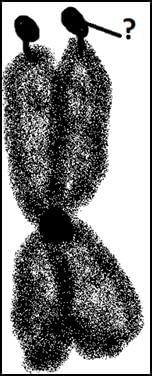NEET Exam > NEET Tests > Daily Test for NEET Preparation > Test: Nucleus & Chromosomes (May 20) - NEET MCQ
Test: Nucleus & Chromosomes (May 20) - NEET MCQ
Test Description
10 Questions MCQ Test Daily Test for NEET Preparation - Test: Nucleus & Chromosomes (May 20)
Test: Nucleus & Chromosomes (May 20) for NEET 2025 is part of Daily Test for NEET Preparation preparation. The Test: Nucleus & Chromosomes (May 20) questions and answers have been
prepared according to the NEET exam syllabus.The Test: Nucleus & Chromosomes (May 20) MCQs are made for NEET 2025 Exam. Find important
definitions, questions, notes, meanings, examples, exercises, MCQs and online tests for Test: Nucleus & Chromosomes (May 20) below.
Solutions of Test: Nucleus & Chromosomes (May 20) questions in English are available as part of our Daily Test for NEET Preparation for NEET & Test: Nucleus & Chromosomes (May 20) solutions in
Hindi for Daily Test for NEET Preparation course. Download more important topics, notes, lectures and mock
test series for NEET Exam by signing up for free. Attempt Test: Nucleus & Chromosomes (May 20) | 10 questions in 10 minutes | Mock test for NEET preparation | Free important questions MCQ to study Daily Test for NEET Preparation for NEET Exam | Download free PDF with solutions
Test: Nucleus & Chromosomes (May 20) - Question 1
What is the site of rRNA synthesis within a cell?
Detailed Solution for Test: Nucleus & Chromosomes (May 20) - Question 1
Test: Nucleus & Chromosomes (May 20) - Question 2
Which of these organelles are not membrane bound?
Detailed Solution for Test: Nucleus & Chromosomes (May 20) - Question 2
Test: Nucleus & Chromosomes (May 20) - Question 3
Which is the primary constriction for every visible chromosome?
Detailed Solution for Test: Nucleus & Chromosomes (May 20) - Question 3
Detailed Solution for Test: Nucleus & Chromosomes (May 20) - Question 4
Test: Nucleus & Chromosomes (May 20) - Question 5
Which type of chromosome has its centromere at its tip?
Detailed Solution for Test: Nucleus & Chromosomes (May 20) - Question 5
Test: Nucleus & Chromosomes (May 20) - Question 6
A few chromosomes have non-staining constrictions at a constant location. What are these constrictions called?
Detailed Solution for Test: Nucleus & Chromosomes (May 20) - Question 6
Detailed Solution for Test: Nucleus & Chromosomes (May 20) - Question 7
Detailed Solution for Test: Nucleus & Chromosomes (May 20) - Question 8
Detailed Solution for Test: Nucleus & Chromosomes (May 20) - Question 9
Test: Nucleus & Chromosomes (May 20) - Question 10
Which of the following statements about the nucleus is correct?
Detailed Solution for Test: Nucleus & Chromosomes (May 20) - Question 10
|
12 docs|366 tests
|
Information about Test: Nucleus & Chromosomes (May 20) Page
In this test you can find the Exam questions for Test: Nucleus & Chromosomes (May 20) solved & explained in the simplest way possible.
Besides giving Questions and answers for Test: Nucleus & Chromosomes (May 20), EduRev gives you an ample number of Online tests for practice




















